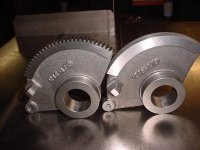Hi,
I'm interested in learning about manufacturing process but there is a subject I cant seem to find resources online or at least cant find resources to clearly explain the steps involved in machining castings with multi operation setups. Like how datums are selected, how can variations in casting rough surface not lead to out of specs final part ..etc? Can anybody provide links to good videos or books about the subject?
I'm interested in learning about manufacturing process but there is a subject I cant seem to find resources online or at least cant find resources to clearly explain the steps involved in machining castings with multi operation setups. Like how datums are selected, how can variations in casting rough surface not lead to out of specs final part ..etc? Can anybody provide links to good videos or books about the subject?





